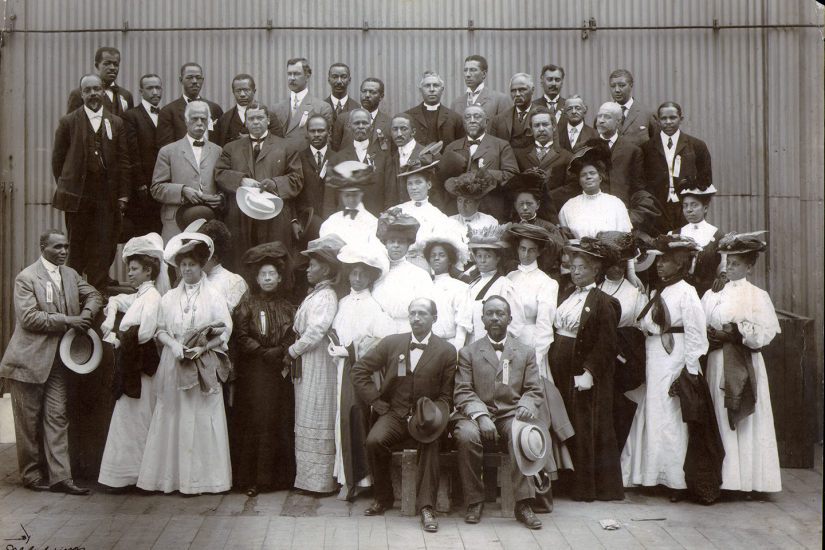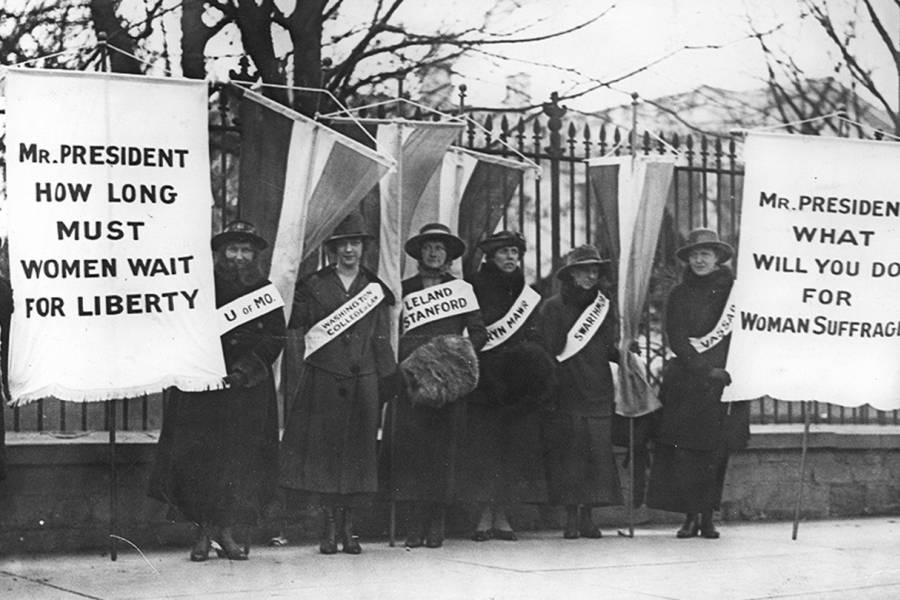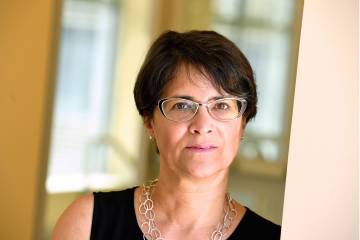Using extended reality technology, three Johns Hopkins graduate students have created a website that allows viewers to experience, as if firsthand, milestones in the movement for women's suffrage in Maryland and the familiar locations where they occurred 100 years ago. Titled "Rally for Votes: An Interactive 360 Video Experience," the website was created by students in the MA in Film and Media program and is designed to give viewers an immersive experience of Maryland's history of the 19th Amendment. It premieres at 6 p.m. on Friday, Sept. 18, in a virtual showing at the SNF Parkway Theatre.
"A lot of the quotes that come from the women fighting for suffrage could be so applicable today, to today's fights and movements toward equality. It's timeless, unfortunately," says team member Haley Knapp, who served as the project's creative producer. "Giving a platform for this history and these voices is important."
Penelope Jagessar Chaffer, Johns Hopkins Immersive Storytelling and Emerging Technologies Sundance artist in residence, will moderate a virtual demo of the experience and discussion with the students, and audience members can join the discussion by chat. Visitors to the website during the debut will first see a 30-second film that fades into a map highlighting three locations that were significant in Maryland's suffrage history. When they click one of them, a 360-degree video will show that location in 2020, as if viewers were standing there themselves, with cars driving past and background sounds audible. Meanwhile, a narrator will describe the site's role in suffrage history, accompanied by still photos and videos related to those historical events. On-screen directions will allow viewers to navigate through each location, after which they return to the map. Clicking "finish" will take them to a link where they can register to vote.
One challenge was figuring out how to host the site to accommodate all the sizes and types of files, video and audio, and the need to interact in a 360-degree virtual space, says Jason Gray, who served as technical director. The team is using the extended reality platform gMetri, where the website will live for at least six months.
"Post production, it's a little more involved," says Gray, an experienced filmmaker who works in multimedia production for Johns Hopkins. "You have to think not just as an editor but almost as a web designer as well. There's some uncharted territory as far as how this is going to be presented."

Image caption: The 'Rally for Votes' virtual experience will include information about African American activists who met at the Progressive Women's Suffrage Club. Black women were excluded from much of the wider suffrage movement, and were forced to form their own organizations. One of the most prominent groups was the Niagara Movement, formed with W.E.B. DuBois, pictured here.
One of the sites is 1532 and 1534 Druid Hill Avenue in West Baltimore, the row houses where next-door neighbors Margaret Gregory Hawkins and Augusta T. Chissell, officers in the Progressive Women's Suffrage Club, hosted meetings of African American activists beginning in 1915. "African American women were largely excluded from Maryland's prominent suffrage groups and worked separately to gain the vote and to address issues like residential segregation and the need for improved community services," the students note in a presentation about their project.
Another Baltimore location is a large stone building at 1714 Park Avenue in Mt. Vernon, the former site of the Friends Meeting House and School now located on North Charles Street. In 1894, activists founded the Baltimore City Suffrage Club and held meetings there, soon uniting with suffragists in Sandy Spring, Maryland, under the banner of the Maryland Woman Suffrage Association. The Quaker community of Sandy Spring serves as the website's third location: Caroline Hallowell Miller used the Sandy Spring Lyceum to revive a movement that had been dormant for almost 20 years by organizing her friends and neighbors. The state group then coordinated with the National American Woman Suffrage Association, sending delegates to its national conventions.
"All the sites had very interesting and surprisingly interconnected storylines," Knapp says.
Creating the website was both intense and exhilarating, the students say. They completed most of the work in a month. Once they developed the concept, Knapp researched sites and developments within the movement, searching online archives and connecting with the Sheridan Libraries, the Maryland Historical Trust, and the Maryland Women's Heritage Center, among others, and acquiring the photos and videos that pop up during the experience. Over email, she and David Samuels, who served as director, researched Maryland's 11 sites to narrow them down to a manageable three. Samuels created the script and coordinated the voiceover artists and musician Dmytro Nebesh, a student at the Peabody Institute. Over three days, Gray and Samuels shot footage and still photos in Sandy Spring, and Gray filmed Druid Hill Avenue, Mt. Vernon, and the replica vintage voting booth currently on display at the MSEL Library. Gray then edited all the components into a cohesive experience.
It helped that, from the beginning, each student had a title and set of responsibilities, Samuels says, though all jumped in wherever they were needed. "When you have the support of the school and the departments, you can reach your goal," Gray adds.
Created as part of a university-wide, year-long commemoration of the 19th Amendment's centennial, the replica voting booth served as a catalyst for the project. Shortly after it went on display in the spring, the pandemic closed the campus. Bess Vincent, who coordinates Hopkins' centennial activities in her role as the Krieger School's assistant dean for strategic initiatives, was disappointed that most students would not be able to enjoy it, and a colleague suggested using virtual reality to recreate the experience. Vincent asked Tim Perell, program director, and Gabo Arora, assistant program director, of the Advanced Academic Program's Film and Media master's program, if they could develop such an experience. Perell and Arora approached the three students, who agreed to give it a try, with Perell and Arora serving as advisors.
"The students started with that idea and have developed something far more expansive—something that really connects us to the suffrage story across the greater Baltimore area," Vincent says. "They have been able to connect with archivists and historians in various locations and have really brought life to these historical sites. What Jason, Haley, and David have developed will help us to understand our history and the importance of civic engagement today."
The three students agree that the project taught them a lot about the production process and the technology involved. But perhaps the greatest impact was made by the stories they researched and then brought to life.
"On a universal level, it's important as a person to constantly be growing and understanding the people around you," Samuels says. "It's important to know that everyone goes through different life experiences, and experiences different forms of hardship in various ways. This was just 100 years ago, which isn't anything at all." After the September 18 premiere, the experience will be available at https://womensvote100.jhu.edu/.
Posted in Arts+Culture
Tagged 19th amendment, hopkins-votes, virtual realit










